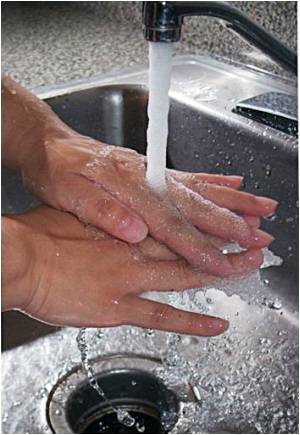
Having a balanced value equation means organizations gain greater value by investing financial resources into operational efficiency."Anthony Stanowski, vice president of industry relations at ARAMARK Healthcare, presented the results at the 19th Annual Health Forum and the American Hospital Association Leadership Summit July 17 in San Diego.The HCAHPS survey is the first national, standardized, publicly reported survey of patients' perspectives of hospital care. In the survey, patients are asked to rate the cleanliness of their room and the overall cleanliness of the hospital.Besides providing them with valuable information about their patients' satisfaction regarding facilities and services, hospitals -- especially those that provide a disproportionate share of uncompensated services to the uninsured -- care about HCAHPS scores because the Value-Based Purchasing Program of the Centers for Medicare and Medicaid Services (CMS) requires hospitals to earn good scores in order to receive full reimbursement for services for Medicare patients.
"HCAHPS scores are like public report cards," said McCaughey. "The scores are tied into the reimbursement packages for health care organizations to receive incentive reimbursements from CMS. Our results suggest that value is derived from efficiency of performance, and not just overall expenditures."The team acquired its data from ARAMARK Healthcare, a company that provides services to health care organizations, including environmental services. ARAMARK Healthcare provided McCaughey and her students with public, as well as operational data from organizations that it serves. "We used the data to create a scatterplot, and we expected to see a straightforward relationship between the amount of money spent and patients' satisfaction scores," said McCaughey. "In theory, more money should lead to better HCAHPS scores. But instead, we found a matrix with data points clustering in four quadrants, and with each quadrant reflecting a different level of expense spending in relation to HCAHPS scores.
Our unique finding was that the quadrant representing high HCAHPS scores and relatively low expense had the second highest value, not the first highest as we had expected. This suggests that it is more than the amount of money spent that is necessary to achieve strong HCAHPS scores. Operational processes and the service provided behind them are more important in achieving strong HCAHPS scores," said McCaughey. According to Stanowski, ARAMARK Healthcare is pleased with the research findings and is able to use the team's results to demonstrate its expertise in enabling hospitals to understand value creation -- getting better HCAHPS scores with more appropriate expenditures -- from the most efficient policies and procedures proven to drive outcomes."The Penn State researchers presented an alternative way to look at cost and patient satisfaction by creating a value equation," said Stanowski. "Using a quadrant analysis, they showed that certain positions produced higher value for hospitals. It has given ARAMARK Healthcare a different perspective, allowing us to incorporate their analysis into our business proposition."
Source-Eurekalert









